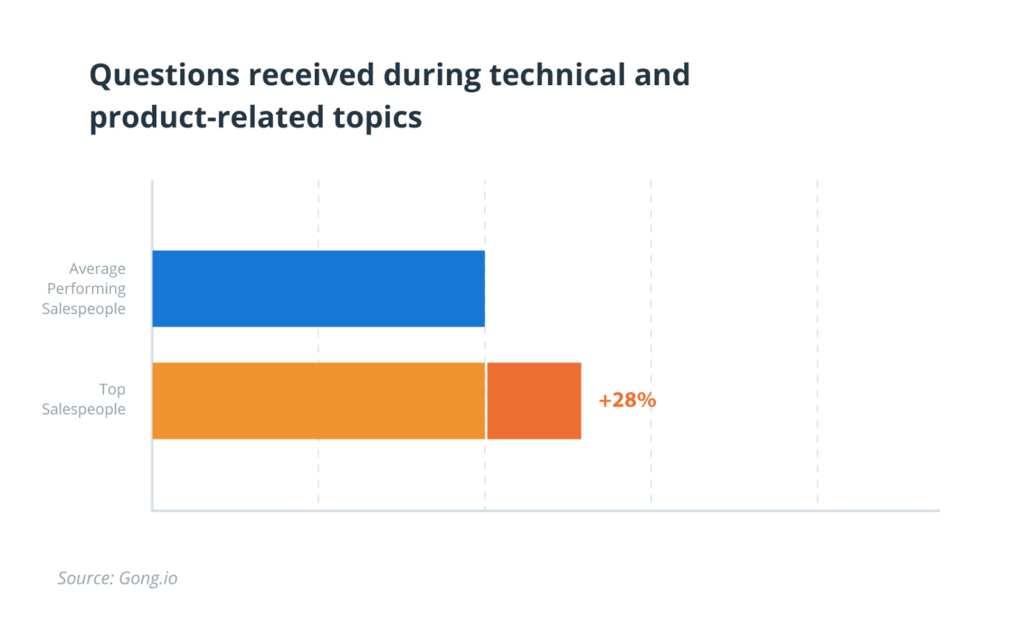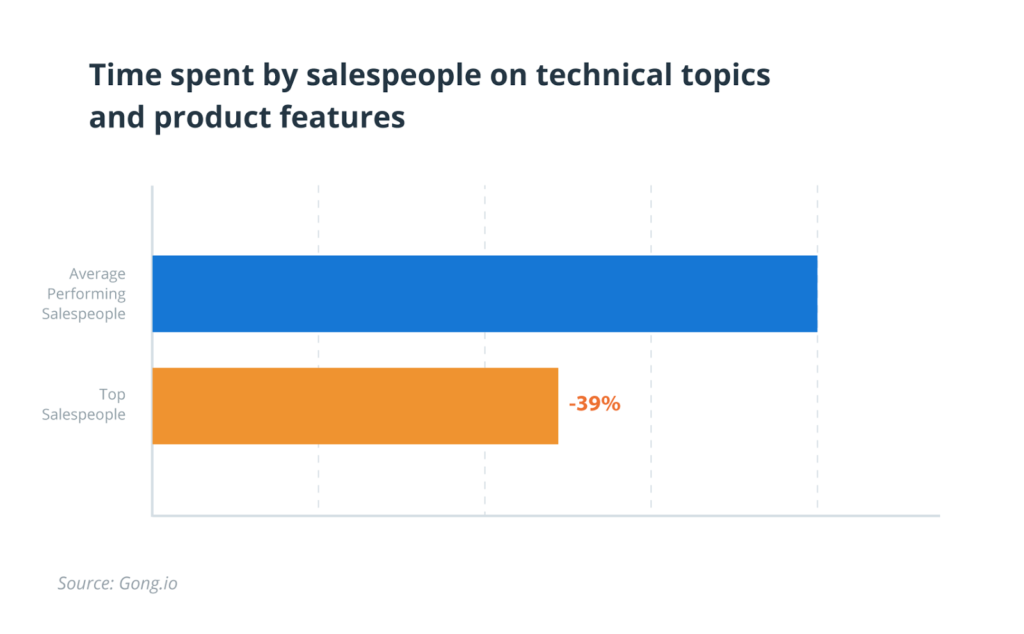Selling skills
How to know if your sales demo is going well

Chris Orlob
Content Author
Published on: January 8, 2018

Signs Your Demo is On The Right Track
I’m kicking myself.
I forgot to include an incredible piece of data in our last post:
According to new data, superstar sales reps are bombarded with questions during their demos compared to their peers.
In the last post, we revealed hard data that said having business value conversations is a hallmark of a superstar sales rep.
Even more interesting…
Reps who go from being “feature-heavy” to “value-heavy” during their sales conversations are predicted to move through the ranks.
They are likely to go from #4 on the rankings, to #3 for example.
Engaging Your Prospect Effectively
Here are the “missing pieces” I left out in the last post.
Superstar sales reps are bombarded with questions during their demos compared to their peers:

They receive 28% more questions from their buyers during product demos and technology-related discussions than “average” sales reps.
For context, this data comes from analyzing a huge pool of B2B sales call recordings with machine learning technology.
The machine learning pinpoints and labels the exact topics that were discussed in every call, for how long, and when.
It also flags questions that were asked by each person.
That is how we were able to tease out the data.
That brings us to the next point.
Engaging Your Prospect Effectively
These super-successful sales reps ask 30% fewer questions to their buyers during product demos than their peers do:

That baffled me at first.
Isn’t it common knowledge that top reps ask more questions?
But when you look at some of the data from the last post, it starts to make sense.
It likely has more to do with the fact that these reps spend much less time discussing these technical topics than their peers:

In other words, they ask few questions during these topics because they spend so little time on them.
Now, here’s how to apply all of this. I have two takeaways for you.
The Peel the Onion Demo Technique
This technique comes from Peter Cohan, author of Great Demo!
“Peel the onion” means give your buyer just enough information (and present it in a way) that actively provokes questions.
Make them want to “peel the layers of the onion” to learn more.
It also has a bonus of letting you know where your buyer is interested, and which areas you can “skip over.”
Here’s how to do this in three steps:
- Explain the value of the capability as concisely as possible
- Demonstrate it so the buyer sees the “end result” of the capability
- Stop talking (don’t explain how it works or how you got there – give the buyer “room” for questions to start surfacing)
If you did it right and if the buyer is interested, their head will start spinning (in a good way) and they’ll pummel you with good questions.
Put Your Demos Through a “Filter”
A buyer’s perception of your product (and its value) will be completely different depending on three things:
- What you show
- What you don’t show
- The order in which you show things
Many young sales reps naively believe they need to show the entire platform (I used to be one of them).
Their thinking is that the more you show, the more value you build.
But showing your buyer parts of your product that they don’t value dilutes the perception of value.
It’s like pouring water into a glass of fine scotch.
Keep your sales demos “high concentrate.”
Show only what the buyer values, and leave off the rest.
. . .
That’s all the data we had left in this analysis!
Stay tuned for future research.
And if you enjoyed this article, will you please hit the LinkedIn “” button below to help spread the word?
We’d really appreciate it :-)


Content Author
Chris Orlob is the Co-Founder and CEO of Pclub.io, a leading sales training platform designed to help sales professionals accelerate their revenue growth. He is best known for his pivotal role at Gong, where he helped scale the company from $200,000 to $200 million in ARR, contributing to a $7.2 billion valuation. During his tenure at Gong, Chris led the creation of Gong Labs and excelled in various go-to-market roles. Today, through Pclub.io, he leverages his deep expertise in sales and revenue operations to coach over 11,000 SaaS sellers.
Discover more from Gong
Check out the latest product information, executive insights, and selling tips and tricks, all on the Gong blog.



